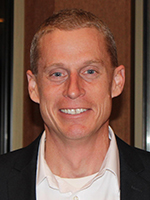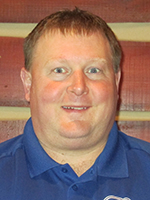
All things forage: You pick a topic (Barry Visser & Dr. Darin Bremmer)
With Barry Visser and Dr. Darin Bremmer, Vita Plus dairy technical service specialists, Dr. Randy Shaver, University of Wisconsin-Madison, and Dr. Larry Chase, Cornell University
When it comes to forages, custom harvesters and dairy producers always have questions to ask and topics to discuss.
In a panel discussion at the recent Vita Plus Custom Harvester Meeting, Dr. Darin Bremmer and Barry Visser joined Dr. Larry Chase of Cornell University and Dr. Randy Shaver with the University of Wisconsin-Madison to share their insight. The panel focuses extensively on corn silage processing strategies and the resulting nutritional value of the feeds. (Click here to learn more about Shredlage® research conducted by Chase and Shaver.)
 Bremmer is a Vita Plus dairy nutritionist who works with producers in central Wisconsin. He discussed that his region has dealt with both severe winter kill and severe drought in the past few years. Therefore, he leans toward higher corn silage diets as he has found haylage to be the most inconsistent crop he sees.
Bremmer is a Vita Plus dairy nutritionist who works with producers in central Wisconsin. He discussed that his region has dealt with both severe winter kill and severe drought in the past few years. Therefore, he leans toward higher corn silage diets as he has found haylage to be the most inconsistent crop he sees.
 Visser is a Vita Plus dairy nutritionist who works with producers in Minnesota, South Dakota and northwest Iowa. Visser said he believes Shredlage has many advantages, even if harvesters aren’t ready to invest in the new technology.
Visser is a Vita Plus dairy nutritionist who works with producers in Minnesota, South Dakota and northwest Iowa. Visser said he believes Shredlage has many advantages, even if harvesters aren’t ready to invest in the new technology.
First, interest in Shredlage has pushed the rest of the industry to really take a look at what can be done to improve processing. Producers and custom harvesters have a chance to learn and work with their chopper settings to get better results, according to Visser.
Improving forage harvesting and storage strategies will pay off for harvesters’ customers as dairy producers achieve increased milk production with high quality feeds. Those improvements are possible through a variety of equipment and management options. Though all of these forage experts have differing experiences and opinions, they could all agree that Shredlage will find its place in the agriculture industry in the next few years.
| Category: |
Feed quality and nutrition Forage Foundations Forage harvesting Milk production and components |

